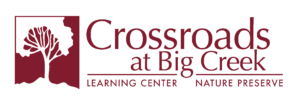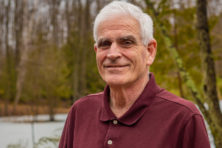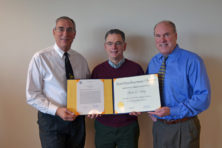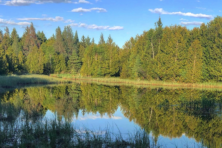Mark Holey: A Second Career in Conservation
- Share
- Tweet
- Pin
- Share

As a fish biologist for the Wisconsin Department of Natural Resources (DNR) and the U.S. Fish and Wildlife Service, Mark Holey spent his career conserving the Great Lakes and the areas around them. In retirement, he’s doing more of the same.
“Once you get hooked on doing things for the environment, it’s hard to let that go,” he said.
So he didn’t. Instead, he’s continued his conservation work through three projects: making an educational prairie area, starting a lecture series and advocating for a Sturgeon Bay NERR (National Estuarine Research Reserve) site.
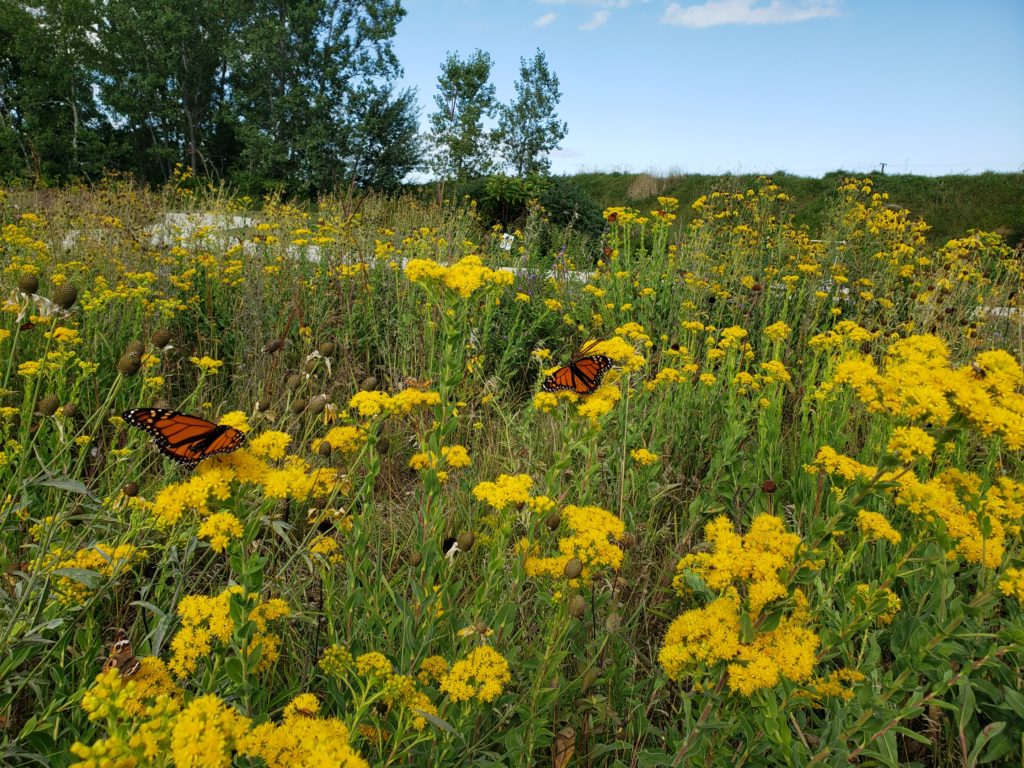
A Prairie Project
When Holey moved back to Sturgeon Bay in 2006 (he bought his first home in the area in 1983), an empty lot stood behind his newly built house. He set out to turn part of that lot into a native plant garden, and his new interest in horticulture led him to the Wild Ones of Door County group, from which he learned more.
Holey didn’t keep his new know-how to himself. Instead, when the Sturgeon Bay branch of the Door County YMCA bought 10 acres of land to develop into a public green space called Peterson Park, he approached the organization about turning part of the land into a native prairie garden.
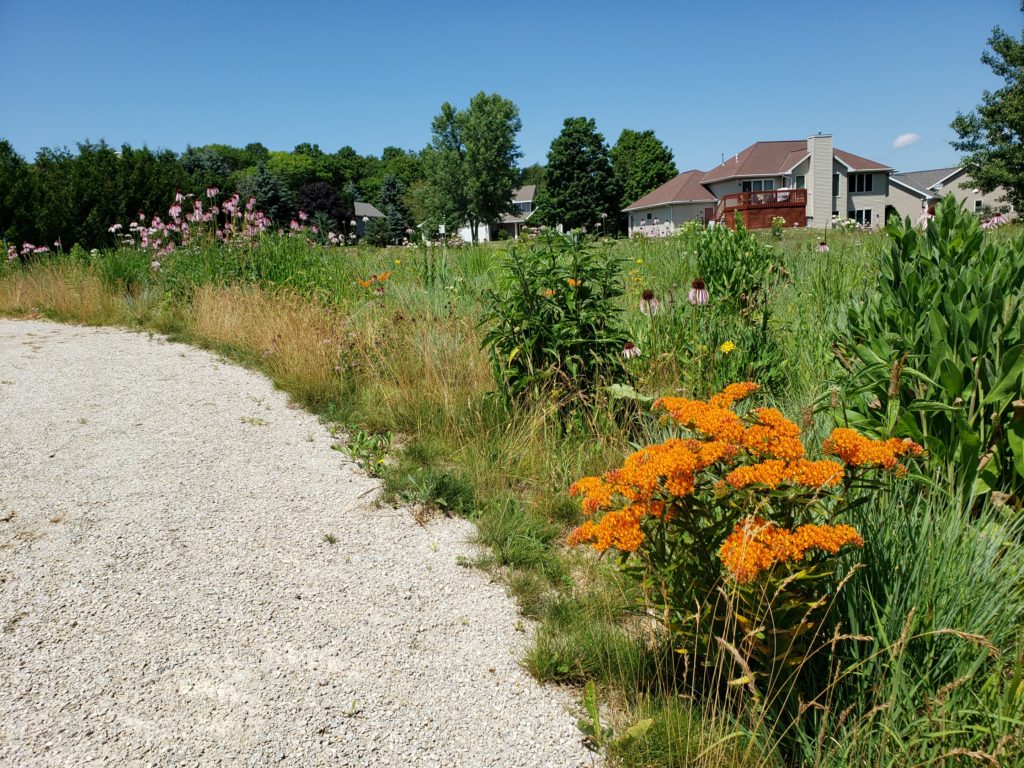
The YMCA liked the idea and agreed to fund the project, paying for a plant nursery to populate a 0.7-acre field with native flora. Holey helped with the process and has worked alongside friends, family members and neighbors to maintain the prairie since it was established in 2014.
Now the prairie is home to flowers that attract pollinators and butterflies; nesting boxes that attract birds such as tree swallows, wrens and chickadees; and informational signs to teach visitors about the plants. No prairies have organically made their home in Door County, so the one behind the YMCA allows people to get an idea of what a local prairie area would look like, Holey said.

Facilitating Fish Tales
When Holey retired at age 63, he had 39 years’ worth of public service under his belt – and he couldn’t let the network of resources he’d developed during his career go to waste during his retirement.
“When I worked for the DNR, they had a suite of conservation tools, and when I worked for the Fish and Wildlife Service, they had their own tool kit, and so on,” he said. “So in retirement, I can reach into some of those toolboxes and use them locally.”
That’s what he did when he started organizing Fish Tales, an annual winter lecture series held at Sturgeon Bay’s Crossroads at Big Creek that brings fish experts to Door County to educate lecture attendees.
When Fish Tales started five years ago, it was a novelty to Crossroads – but it was nothing new to Holey. Throughout his career, collaborations with scientists and organizations from every part of the Great Lakes region were regular occurrences.
“Several times a year, we’d come together and review the latest science and hear directly from the scientists,” he said. “So I thought I could bring some of those people to our county.”
Over the years, Fish Tales has covered topics such as cisco-management options, the effects of invasive species on Great Lake food webs and the impact of climate change on fish populations. The series regularly draws people from all over the country, whether as guest lecturers from out of state or interested listeners who tune in online, Holey said.
Perhaps even more important, the series helps local anglers to better understand how they can fish responsibly, said Coggin Heeringa, Crossroads’ program director and naturalist. For example, recent lectures provided information about fishery regulation and best practices for bass tournaments – a hot topic for the Sturgeon Bay Common Council.
“The research that we present at our program is helping people make informed decisions about things like that,” Heeringa said.

Navigating NERR Efforts
Not all ecological volunteer efforts involve cultivating an outdoor space or wrangling researchers. Some involve sitting on a board and collaborating with local governments, which is what Holey does as co-chair of Sturgeon Bay’s Ad Hoc NERR Committee. Created in 2020, the committee works to identify areas in Sturgeon Bay that could be part of the NERR site and bring a NERR visitor center to Sturgeon Bay.
NERRs are areas along the coastal U.S. designated for the research and protection of estuaries (partially enclosed coastal bodies with one or more streams flowing into them). NERR sites are “living laboratories” that draw educators and scientists to conduct place-based research and outreach. Communities that host them benefit from increased ecotourism, research dollars and educational resources.
“It would be a locally relevant project with a national reach,” Holey said.
His goal for his NERR advocacy is similar to the reason behind starting the Fish Tales series: He wants to “bring science directly to Door County.”
Holey’s volunteer projects might seem like three very different efforts, but his ecological vision ties them all together: “It’s about climate change, and it’s about working with the land to preserve what’s important,” he said.


